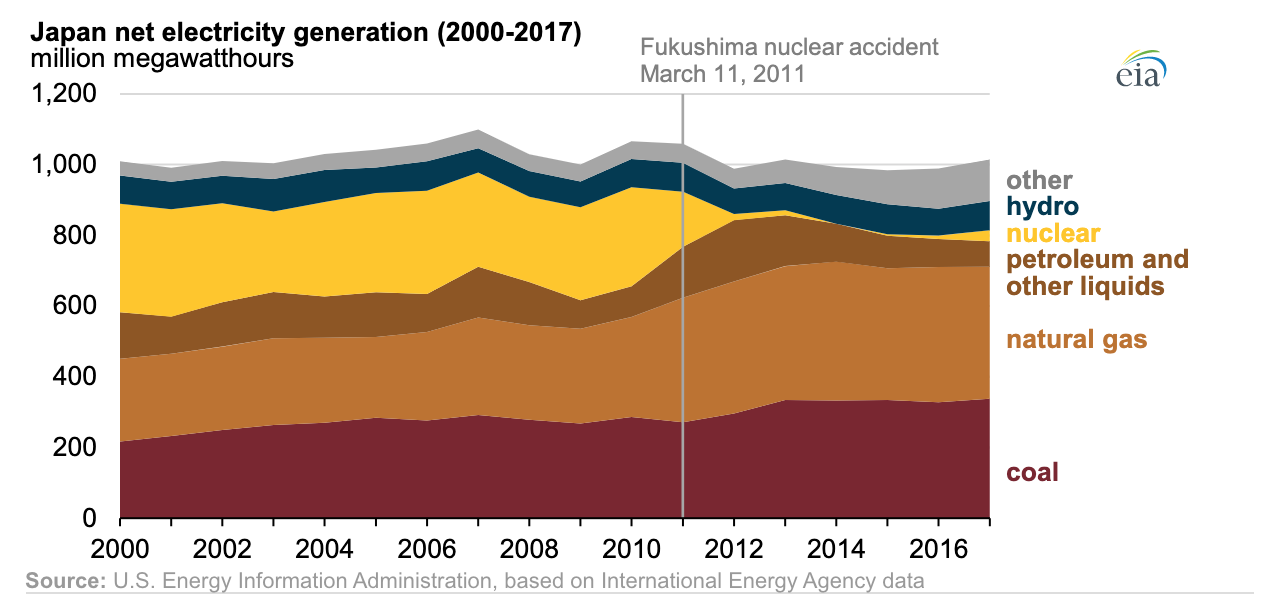On March 11, 2011, the Great Tōhoku Earthquake – the most powerful ever recorded in Japan – caused a tsunami that reached up to 10km inland, killing over 18,000 people and triggering the meltdown of three reactors at the Fukushima Daiichi Nuclear Power Plant. Nine years later, Fukushima is fighting back and establishing itself as a renewable energy hub with 2.75 billion USD invested in making the region’s energy supply 100% renewable by 2040.
Since 2011, on March 13, people across Japan gather to remember the 2011 earthquake, tsunami, and nuclear meltdown with a variety of memorial services. This year Japanese authorities have cancelled many of these events as they strive to contain the Covid-19 crisis by limiting large public gatherings. Notwithstanding these restrictions, commemorating the event is important not only to remember those that passed away but also to highlight the ways in which affected communities are bouncing back.
In Fukushima, the local government is intent on changing the prefecture’s image from an area of nuclear disaster to a symbol of clean energy. In fact, Fukushima prefecture (which covers an area encompassing 59 municipalities and a population of over 1.8 million people), aims to power the entire region with 100% renewable energy by 2040 and become a renewable energy research hub. A significant feat if you consider that the local government is still struggling with recovery efforts that up to 2018 involved 50,000 people yet to be relocated because of the tsunami and nuclear meltdown.
As of April 2017, renewable energy accounted for 28% of the prefecture’s energy needs and about 60% of its electricity consumption. Furthermore, studies indicate that the potential for wind and solar energy development in the area is significant, with about 600 megawatts of power generation potential available. This has led to plans for the development of ten solar and eleven wind power plants in areas that are no longer suitable for cultivation due to high radiation levels. This would give a new lease on life to areas that have remained abandoned since 2011.
Japan’s energy mix
From 1995 to 2011, nuclear power accounted for around one-third of Japan’s energy mix. However, this plummeted to 1.7% in 2012. Following the disaster, all nuclear reactors in Japan were shut down and there now remain only 9 currently operating, all of which under extremely stringent safety demands and amidst popular opposition. The Japanese government has had to explore new solutions to meet their energy requirements. For the most part, this has led to energy-saving efforts, natural gas-fired thermal power plants, coal, and renewable energy.

In 2018, renewables accounted for only 17.4% of Japan’s energy mix. A figure that is significantly lower than European countries for example, according to the Institute for Sustainable Energy Policies. The government has set the target for 22-24% renewable energy by 2030, which has received some criticism for its lack of ambition. Furthermore, Japan is facing backlash due to its dependence on fossil fuels such as coal – which accounts for almost 30% of energy production and makes the country the third-largest importer after India and China.
Fukushima leading the way
Fukushima was the most hard-hit region from the aftereffects of the nuclear meltdown. However, it is now leading the way on renewables, providing the most ambitious plans for renewable energy generation in Japan. What is more, the transformation is not only being brought from the top-down – with large groups such as the Development Bank of Japan and Mizuho Bank mobilizing 2.75 billion USD in investments – but is also being called for by local residents, 54% of which declared (in a 2017 prefecture survey) that they wanted renewable energy.
Fukushima also hosts several organizations that promote renewable energy development such as the Fukushima Renewable Energy Institute in Koriyama, which is part of the National Institute of Advanced Industrial Science and Technology. Here, researchers are hard bent on improving the technology, efficiency and use of several forms of renewable energy, including photovoltaic, wind, shallow geothermal and geothermal. Furthermore, the institute is involved in research on hydrogen obtained from renewable energy sources.
“With technological support from the institute, a support program for local businesses in the quake- and tsunami-damaged areas is being carried out and human resources are being developed in collaboration with local universities. As a result, there have been 107 joint research projects implemented and nine successful examples of commercialization”, explains Masaru Nakaiwa, the institute’s director-general, in an e-mail interview with The Japan Times.
Creating opportunity out of disaster
On this year’s anniversary of the disaster, it is hard not to ignore the widespread Covid-19 crisis as memorial events across Japan were either scaled-down or canceled.
However, remembering the Fukushima disaster and looking at how the area has reacted to such a profound crisis, can inspire efforts for positive change. Out of crises arise new opportunities and just as the triple meltdown of the nuclear plant in Fukushima has led to substantial efforts towards renewable energy, the Covid-19 crisis could motivate collective behavior that can help us tackle the climate crisis, not least of which inspired by the huge decrease in CO2 emissions that the virus has generated over the past month.






